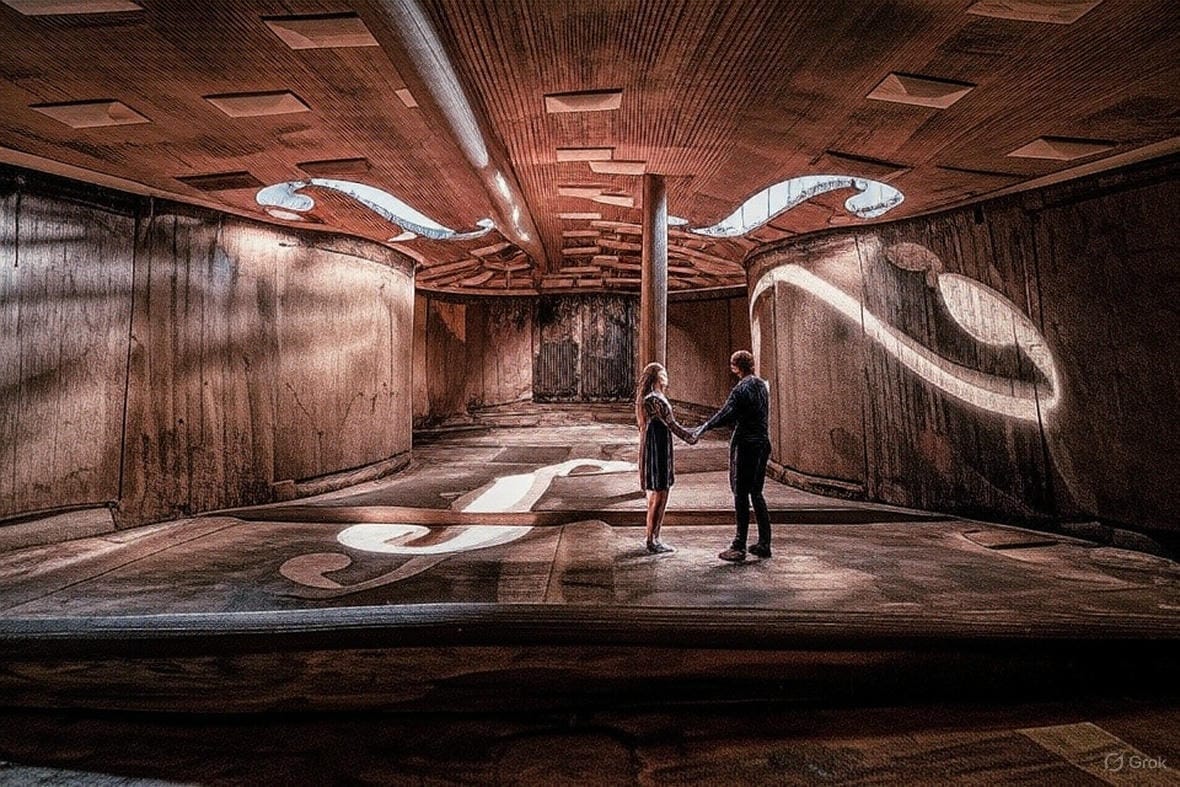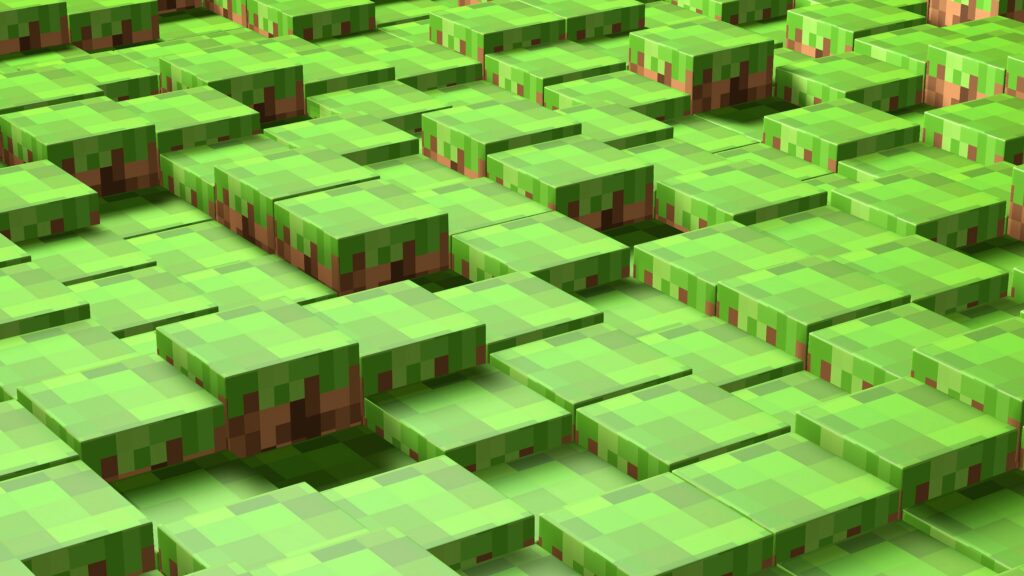
Over the weekend, Elon Musk shared Grok altered photographs of people walking through the interior of instruments and implied that his AI system had created the beautiful and surreal images. But the underlying photos are the work of artist Charles Brooks, who wasn’t credited when Musk shared the images with his 220 million followers.
Musk drives a lot of attention to anything he talks about online and that can be a boon for artists and writers, but only if they’re credited and Musk isn’t big on sharing credit. This all began when X user Eric Jiang posted a picture of Brook’s instrument interior photographs Jiang had run through Grok. He’d use the AI to add people to the artist’s original photos and make the instrument interiors look like buildings. Musk then retweeted Jiang’s post, adding “Generate images with @Grok.”
Neither Musk or Jiang credited Brooks as the creator of the original photos, though Jiang added his name in a reply to his initial post.
Brooks told 404 Media that he isn’t on X a lot these days and learned about the posts when someone else told him. “I got notified by someone else that Musk had tweeted my photos saying they’re AI,” he said. “First there’s kind of rage. You’re thinking, ‘Hey, he’s using my photos to promote his system. Quickly it becomes murky. These photos have been edited by someone else […] he’s lifted my photos from somewhere else […] and he’s run them through Grok—and this is the main thing to me—he’s edited a tiny percentage of them and then he’s posted them saying, ‘Look at these tiny people inside instruments.’ And in that post he hasn’t mentioned my name. He puts it as a comment.”
Brooks is a former concert cellist turned photographer in Australia who is most famous for his work photographing the inside of famous instruments. Using specialized techniques he’s developed using medical equipment like endoscopes, he enters violins, pianos, and organs and transforms their interiors into beautiful photographs. Through his lens, a Steinway piano becomes an airport terminal carved from wood and the St. Mark’s pipe organ in Philadelphia becomes an eerie steel forest. Jiang’s Grok-driven edit only works because Brook’s original photos suggest a hidden architecture inside the instruments.

He sells prints, posters, and calendars of the work. Referrals and social media posts drive traffic, but only if people know he’s behind the photos. “I want my images shared. That’s important to me because that’s how people find out about my work. But they need to be shared with my name. That’s the critical thing,” he said.
Brooks said he wasn’t mad at Jiang for editing his photos, similar things have happened before. “The thing is that when Musk retweets it […] my name drops out of it completely because it was just there as a comment and so that chain is broken,” he said. “The other thing is, because of the way Grok happens, this gets stamped with his watermark. And the way [Musk] phrases it, it makes it look like the entire image is created by AI, instead of 8 to 10 percent of it […] and everyone goes on saying, ‘Oh, look how wonderful this AI is, isn’t it doing amazing things?’ And he gets some wonderful publicity for his business and I get lost.”
He struggled with who to blame. Jiang did share Brooks’ name, but putting it in a reply to the first tweet buried it. But what about the billionaire? “Is it Musk? He’s just retweeting something that did involve his software. But now it looks like it was involved to more of a degree than it was. Did he even check it? Was it just a trending post that one of his bots reposted?”
Many people do not think while they post. Thoughts are captured in a moment, composed, published, and forgotten. The more you post the more careless you become with retweets and comments and Musk often posts more than 100 times a day.
“I feel like, if he’s plugging his own AI software, he has a duty of care to make sure that what he’s posting is actually attributed correctly and is properly his,” Brooks said. “But ‘duty of care’ and Musk are not words that seem to go together well recently.”
When I spoke with him, Brooks had recently posted a video about the incident to r/mildlyinfuriating, a subreddit he said captured his mood. “I’m annoyed that my images are being used almost in their entirety, almost unaltered, to push an AI that is definitely disrupting and hurting a lot of the arts world,” he said. “I’m not mad at AI in general. I’m mad at the sort of people throwing this stuff around without a lot of care.”
One of the ironies of the whole affair is that Brooks is not against the use of AI in art per se.
When he began taking photos, he mostly made portraits of musicians he’d enhance with photoshop. “I was doing all this stuff like, let’s make them fly, let’s make it look like their instrument’s on fire and get all of this drama and fantasy out of it,” he said.
When the first sets of AI tools rolled out a few years ago, he realized that soon they’d be better at creating his composites than he was. “I realized I needed to find something that AI can’t do, and that maybe you don’t want AI to do,” he said. That’s when he got the idea to use medical equipment to map the interiors of famous instruments.
“It’s art and I’m selling it as art, but it’s very documentative,” he said. “Here is the inside of this specific instrument. Look at these repairs. Look at these chisel marks from the original maker. Look at this history. AI might be able to do, very soon, a beautiful photo of what the inside of a violin might look like, but it’s not going to be a specific instrument. It’s going to be the average of all the violins it’s ever seen […] so I think there’s still room for photographers to work, maybe even more important now to work as documenters of real stuff.”
This isn’t the first time someone online has shared his work without attribution. He said that a year ago a CNN reporter tweeted one of his images and Brooks was able to contact the reporter and get him to edit the tweet to add his name. “The traffic surge from that was immense. He’s an important reporter, but he’s just a reporter. He’s not Elon,” Brooks said. He said he had seen a jump in traffic and interest since Elon’s tweet, but it’s nothing compared to when the reporter shared his work with his name.
“Yet my photos have been published on one of the most popular Twitter accounts there is.”


